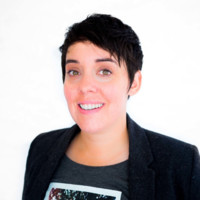 Andrea Belk Olson
Andrea Belk Olson The Eeyore Syndrome
We have all dealt with it.Someone in the organization that’s an Eeyore. Maybe it’s someone on your team, or maybe it’s even the head of your department. What is an Eeyore? In the story, he is generally a pessimistic, gloomy, depressed, and anhedonic character. Pessimistic, gloomy and depressed people usually wear their unhappiness on their sleeve for all to see like Eeyore. But outside of a diagnosed condition, this attitude can be toxic for your organization.
We often ignore it, scratching it up to an individual’s personality, or just accepting that there’s really no way around getting someone with Eeyore Syndrome. Yet, this issue isn’t just about positivity, but about the example it sets for your company culture.
Culture is a fickle thing. And when you have individuals in the organization that push down challenges or push away when faced with obstacles, it sets the tone for acceptable behavior. If that behavior isn’t addressed as something unacceptable, it becomes part of the fold. Employees ask, “If Joe can be this way and keep his position, what’s wrong with me doing the same?”
When we accept certain attitudes and behaviors, we are fundamentally condoning them. Often times, these attitudes manifest from employees who are burned out, have too much on their plate, are ill-equipped to address the challenges they are tasked with, or simply have faced too much push back that they’ve given up. These employees can readily be supported and transformed by duty adjustments, coaching, and feedback loops.
On the other end of the spectrum, there are employees who bring these attitudes and behaviors to the table to retain control. While sounding counter-intuitive, these employees (frequently front-line staff or middle-managers) tend to be presented with new ideas or projects, and out of the gate share a laundry list of reasons why something can’t be done. “We don’t have time, resources, budget, approval, etc. to make it happen.” It’s not that they can’t do it, but the more that they have to reveal “how the sausage is made”, they lose the latitude and ability to pick and choose what they personally prefer to do.
If you have an employee in the latter category, this is a result of three leadership gaps. One, the lack of established and defined organizational cultural norms – attitudes and behaviors which are not simply stated but displayed through the actions of the entire leadership team.
Two, the lack of follow-through in reinforcing those actions by example.In short, if I come with a negative perspective but my boss doesn’t push back, I can continue to conduct myself this way without consequence.
And third, the lack of understanding of their employee’s job. While I’m not condoning micromanagement, if you’ve never been an accountant for example, how as a leader do you know whether something can be executed easily or not? This requires leaders to gain a better understanding of the pushback by asking why, digging into the details, and getting specific as to what real obstacles exist, rather than perceived ones.
Am I saying that employees shouldn’t give candid feedback to their superiors if something’s a bad idea? Not at all. I do contend that each and every employee should provide new ideas and approaches on how to make something happen. It’s the difference between a “why we can’t” vs. “how we can”.
When we accept apathy or negativity as the norm, we get a slow-moving organization that is resistant to change. Organizational leaders need to examine not only what example they are setting, but how they are inadvertently rewarding negative behavior. What’s the impetus for an employee to go above and beyond, when their peer can cut their workload in half and draw the same salary, simply by always stating the ways something can’t be done?
It might seem like a simple personality annoyance, but the Eeyore syndrome is just one of the many ways where your organization’s productivity is being sabotaged from the inside out.
About the Author
Andrea’s 22-year, field-tested background provides unique, applicable approaches to creating more customer-centric organizations. A 4-time ADDY® award-winner, she began her career at a tech start-up and led the strategic marketing efforts at two global industrial manufacturers.
In addition to writing, consulting and coaching, Andrea speaks to leaders and industry organizations around the world on how to craft effective customer-facing operational strategies to discover new sources of revenues and savings.
Connect with Andrea to access information on her book, workshops, keynote speeches, training or consulting. More information is also available on www.pragmadik.com and www.thecustomermission.com.









